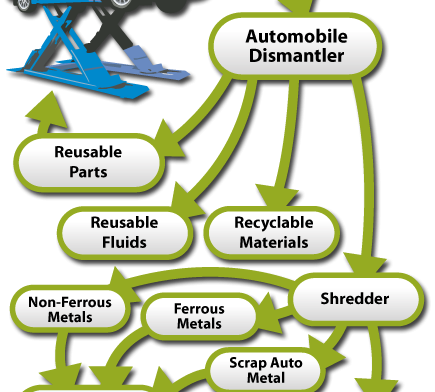General Motors (GM) is a huge player in the automotive industry, and they’ve made significant downsizing efforts. Some of these efforts include the closure of several manufacturing plants and a strategic shift toward electric vehicles (EVs). While these moves play a huge role in maintaining GM’s competitiveness in the long-term, they have also sent waves throughout the scrap metal industry. This article discusses how GM’s downsizing has impacted the flow of scrap metal, focusing on the implications for industry stakeholders, including those in regions like New Jersey, where businesses like those operating a tow truck in Paterson NJ have a hand in recycling and scrap recovery by handling junk cars.
GM’s Downsizing and Its Impact on Scrap Flows
Several market challenges, including fluctuating consumer demand, supply chain disruptions, and the global push toward sustainable practices have presented themselves to GM in recent years. As a result, GM announced plans to downsize by closing multiple plants, including some facilities in North America. This move directly reduces the amount of automotive scrap the company generates.
A lot of scrap metal, especially ferrous materials like steel and iron, as well as non-ferrous metals such as aluminum and copper, is produced by car manufacturing. When GM scales down its operations, it made these valuable scrap materials less available, impacting the overall flow within the scrap metal industry. Furthermore, as GM moves to produce more electric vehicles (EVs), they will use different types of materials. EVs typically require less steel and more lightweight materials, like aluminum, which makes the manufacturing and end of life vehicle processes generate different types of scrap than before.
Effect on Scrap Metal Prices and Demand
The decrease in scrap metal flow resulting from GM’s decisions has a direct impact on scrap metal prices. Since there’s less scrap metal being produced from automotive sources, there’s less supply, so prices have stabilized or slightly increased. According to recent market data, ferrous scrap prices have shown minimal growth in recent months, and industry participants report a slight increase in market confidence despite the reduced supply from GM.
There are a few factors that go into this stabilization in prices. Firstly, there’s still a lot of demand for scrap metal globally, particularly in export markets like Asia, where recycled materials are necessary to produce steel. Secondly, domestic mills in the United States are operating at relatively low production levels, which has balanced supply and demand. As a result, even with GM’s downsizing efforts, the impact on scrap prices has been softened by these other aspects of the market.
Geographic Implications for Scrap Collectors and Processors
Different regions experience different effects resulting from GM’s downsizing. Areas with a lot of GM facilities, like Michigan and Ohio, are likely to experience a more immediate and pronounced impact. However, the implications extend to other regions, including New Jersey, where businesses that operate something like a tow truck in Paterson NJ, for example, are involved in collecting and recycling automotive scrap.
For instance, in New Jersey, local scrap collectors and processors will have less automotive scrap to collect and process, which impacts their operations and profitability. Having less available scrap also means there will be more competition for it, so businesses need to look for alternative sources or expand their reach into other areas. Moreover, the increasing production of EVs instead of the traditional internal combustion engine means that local scrap yards and processors may need to change their processes to handle different kinds of scrap metal than what they’re used to.
The Future of Scrap Metal in the Automotive Industry
In the future, the scrap metal industry needs to be prepared for continued changes as GM and other automotive giants make their manufacturing practices more sustainable. The move toward electric vehicles, in particular, is expected to have a huge impact on the industry as a whole. As GM produces more EVs, the industry might see a gradual decline in the availability of ferrous scrap as non-ferrous materials like aluminum and copper are used more.
To adapt to these changes, scrap metal dealers and processors need to diversify their supply chains and explore new markets. Some may find opportunities in international markets, where demand for recycled materials remains strong, while others may need to invest in new technologies and processes to accommodate different types of scrap.
How GM Downsizing Affects Scrap Metal Flows
The downsizing efforts by General Motors have already begun to impact the scrap metal industry, reducing the flow of traditional automotive scrap and stabilizing prices. For stakeholders, including those in the tow truck Paterson NJ market, changes like the impact of electric vehicles on scrap metal recycling present challenges and opportunities. By understanding these shifts and preparing for a future where the type and availability of scrap metal may continue to change, businesses can thrive in an increasingly dynamic market environment.




